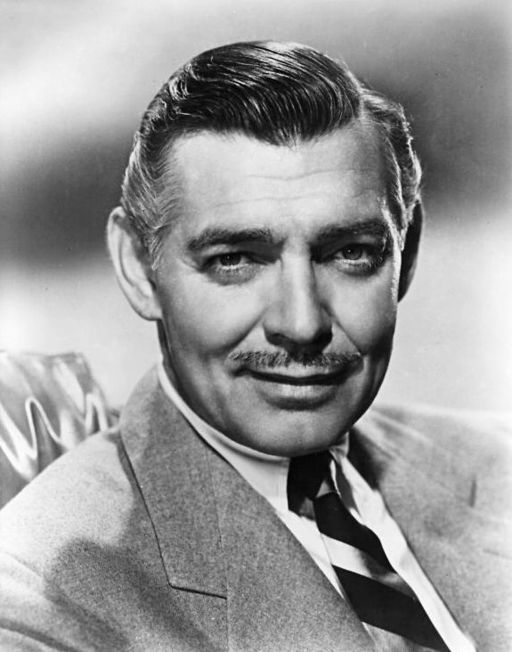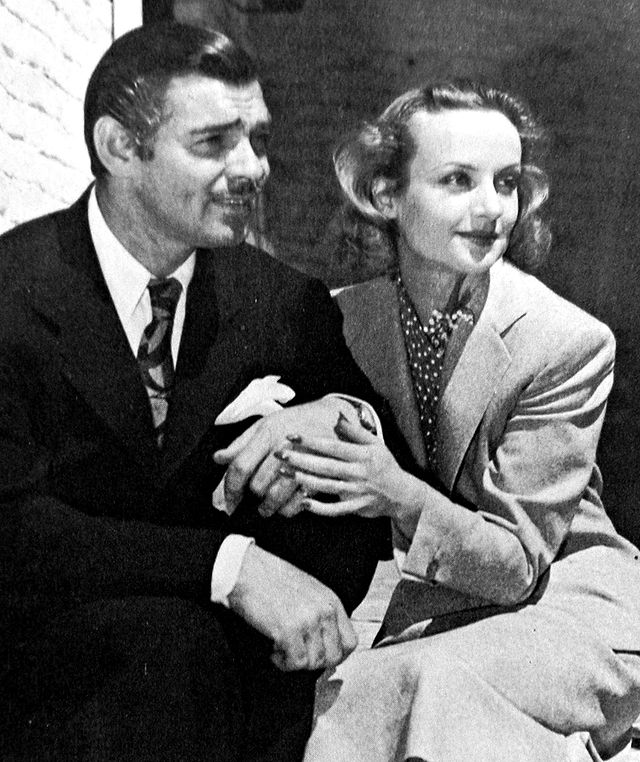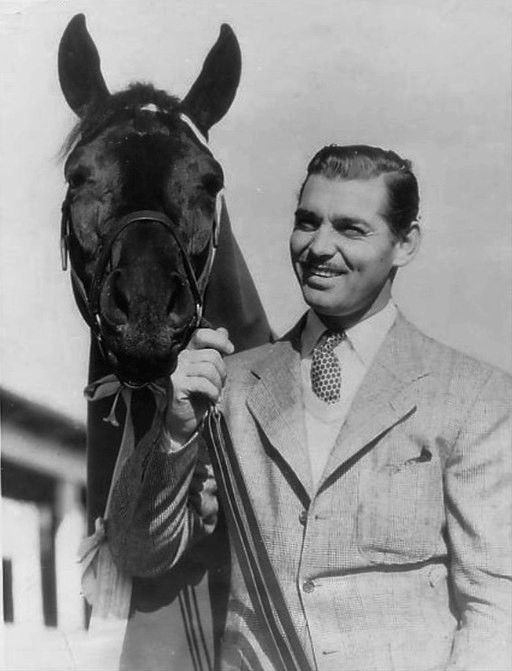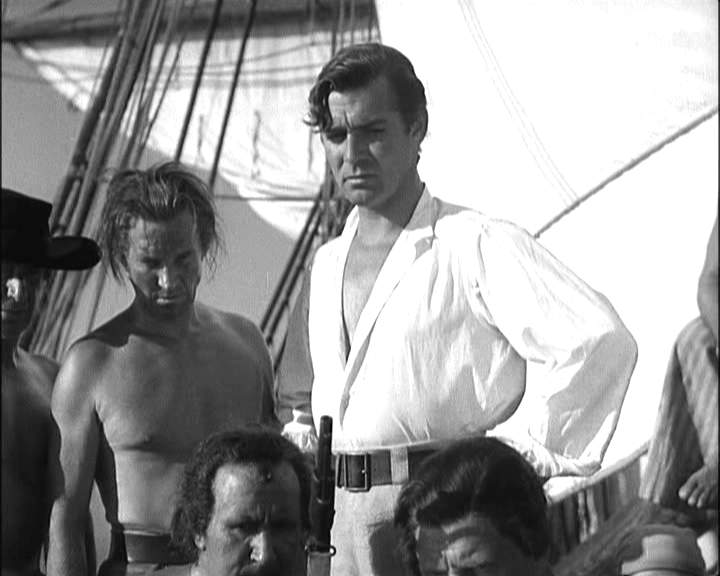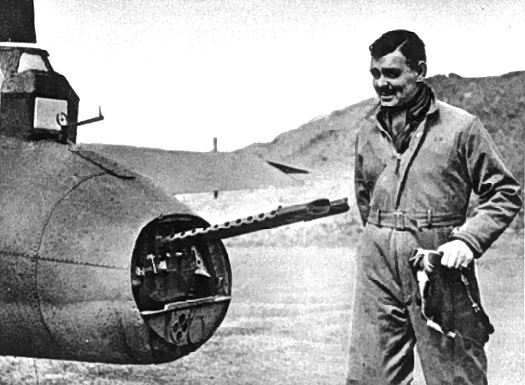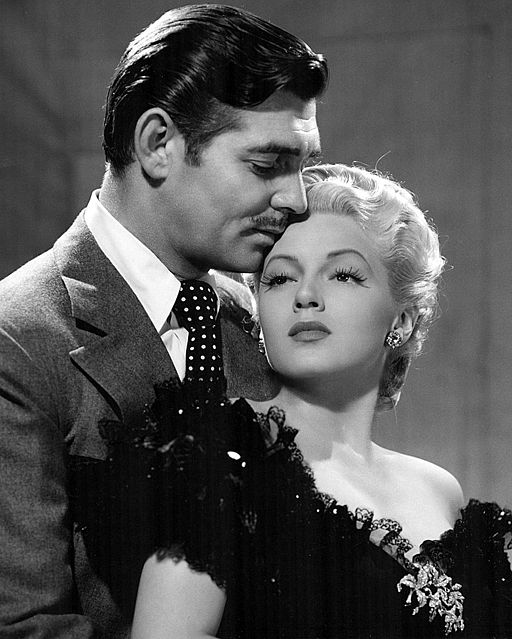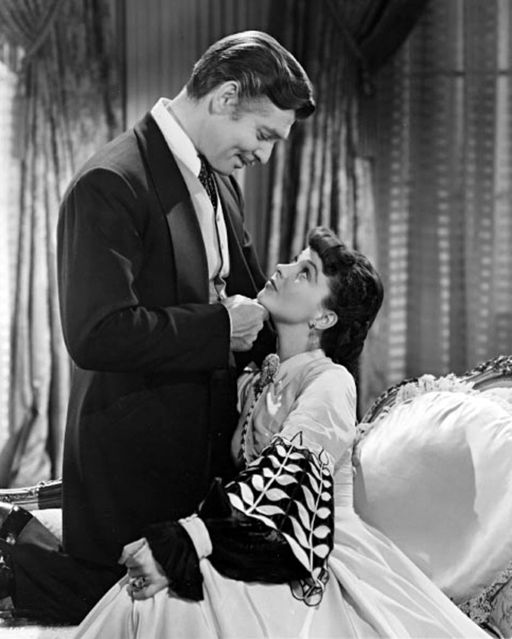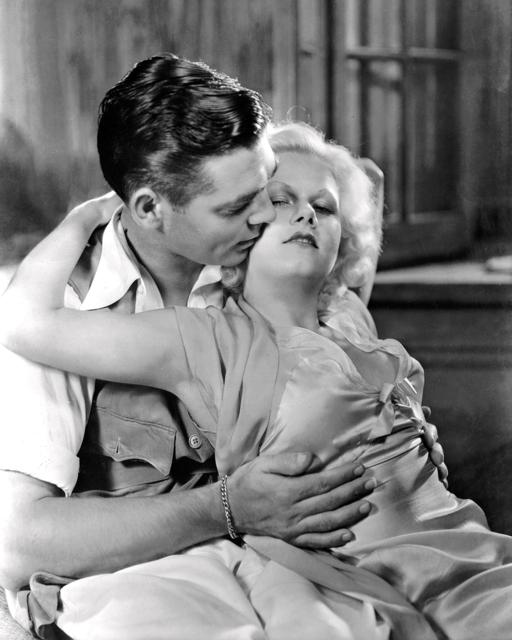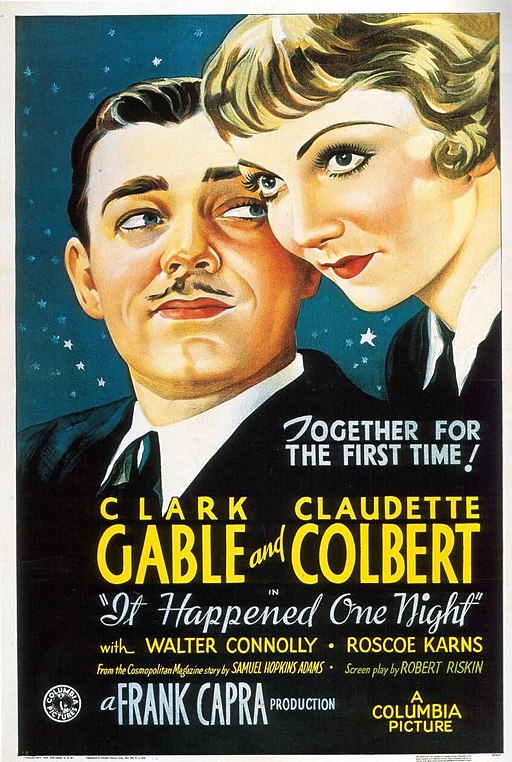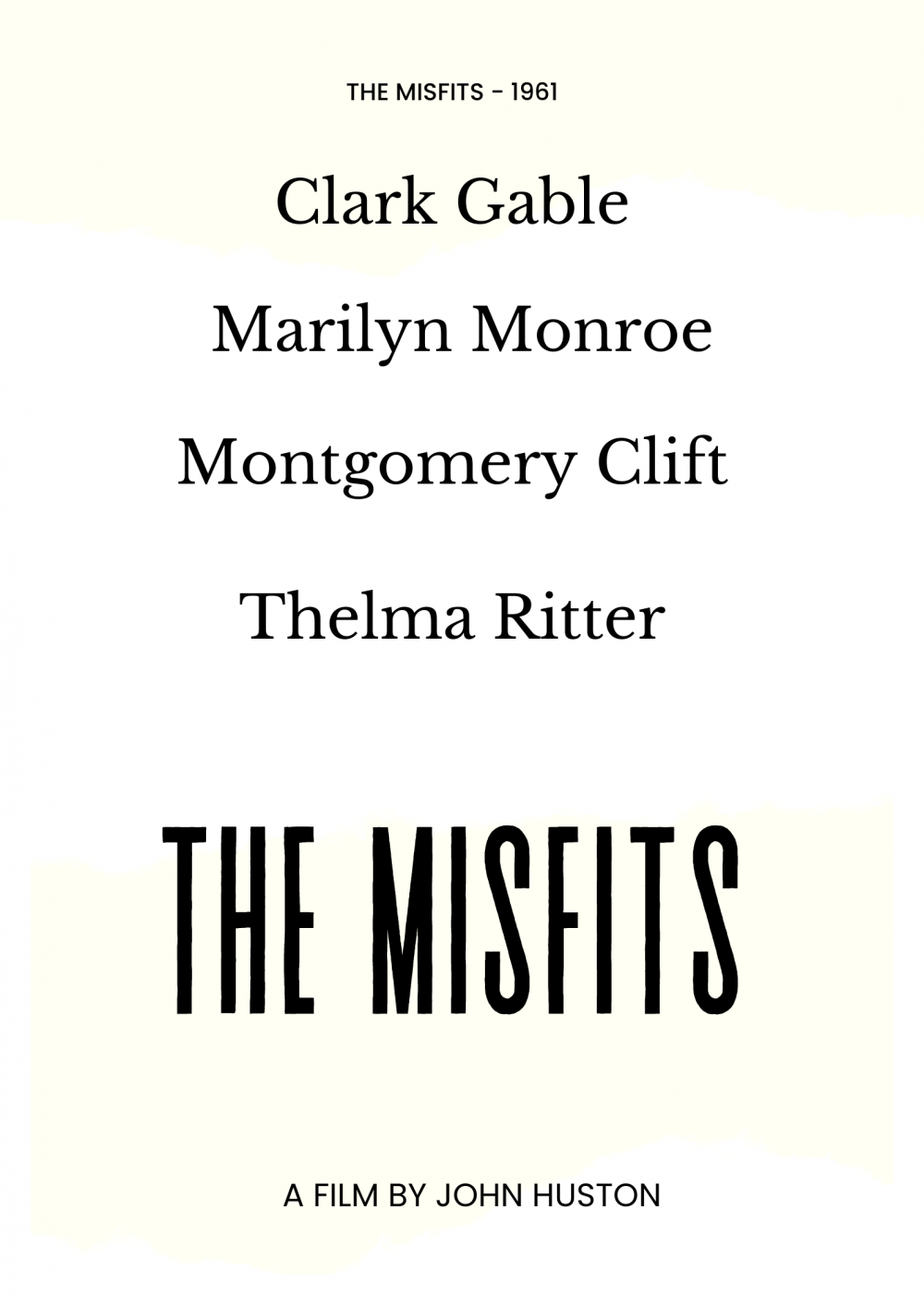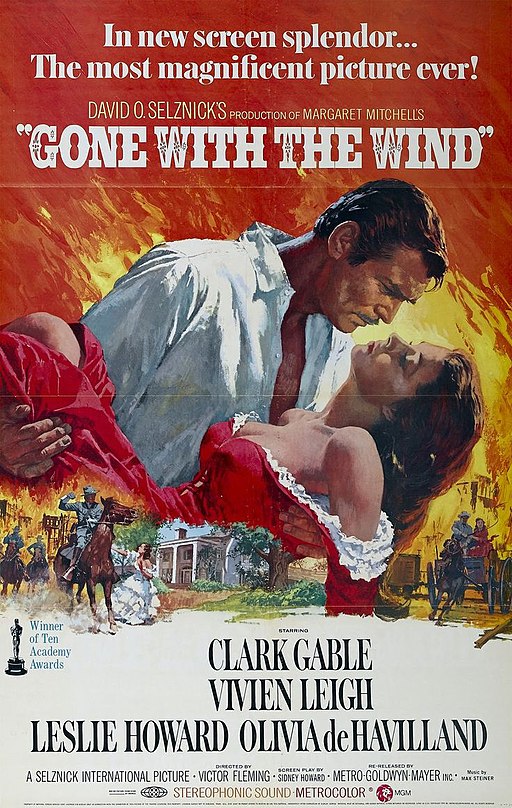Clark Gable
back| Full Name | William Clark Gable |
| Stage Name | Clark Gable |
| Born | February 1, 1901 |
| Birthplace | Cadiz, Ohio, USA |
| Died | November 16, 1960 |
| Buried | Forest Lawn Memorial Park, Glendale, California, USA |
| Married to | Josephine Dillon (1924–1930), Maria Langham (1931–1939), Carole Lombard (1939–1942, her death), Sylvia Ashley (1949–1952), Kay Williams (1955–1960, his death) |
| Children | Judy Lewis (with Loretta Young, though not acknowledged publicly during his lifetime), John Clark Gable (born to Kay Williams posthumously) |
| Notable films | It Happened One Night (1934) - Gone With the Wind (1939) - Mutiny on the Bounty (1935) - The Misfits (1961) |
Clark Gable
The King of Hollywood
Clark Gable, known as "The King of Hollywood," was one of the most iconic and influential actors of the 20th century. His rugged good looks and charismatic on-screen presence made him a leading man in classic American cinema.
Gable was born in Cadiz, Ohio, and faced tragedy early with his mother dying before he turned one year old. He developed an interest in acting in his teenage years.
His acting career began in theater, and he gradually made his way to Hollywood. His early film work included small roles, but his talent soon caught the attention of the industry.
Gable's star rose rapidly in the 1930s, with his role in "It Happened One Night" earning him an Academy Award for Best Actor. He became MGM's top male star, appearing in a series of successful films.
His most famous role was as Rhett Butler in "Gone with the Wind" (1939), a performance that solidified his status as a Hollywood legend.
Related
Clark Gable
Biography and analysis of his career
Early Life and Family Background
- Clark Gable, born William Clark Gable on February 1, 1901, in Cadiz, Ohio, faced tragedy early when his mother died before he was a year old. Raised in a modest environment, his interest in acting emerged during his teenage years after seeing a play.
Career Beginnings
- Gable's journey into acting began with theater. He worked in numerous small productions, often in non-leading roles. His early career was marked by struggle and a gradual honing of his craft.
- He moved to Hollywood in the 1920s, starting with small film roles. His big break came when he signed with MGM, catapulting him into more prominent roles.
Rise to Stardom
- Gable's charisma and rugged good looks quickly made him a favorite. He won an Academy Award for Best Actor for his role in "It Happened One Night" (1934), a testament to his talent and appeal.
- He became one of Hollywood's most bankable stars, with a string of successful films in the 1930s and 1940s. His role as Rhett Butler in "Gone with the Wind" (1939) solidified his status as a Hollywood legend.
Military Service
- During World War II, Gable enlisted in the U.S. Army Air Forces, serving as an aerial gunner. His service was both a personal choice, spurred by the death of his wife Carole Lombard in a plane crash, and a significant public relations boost for the military.
Personal Life and Marriages
- Gable's personal life was as eventful as his career. He was married five times, first to Josephine Dillon, then to Maria Langham. His third marriage to actress Carole Lombard was widely publicized and considered the great love of his life. Her death in 1942 in a plane crash deeply affected him.
- He later married Sylvia Ashley and finally Kay Williams, with whom he had a son, John Clark Gable, born after his death.
- Gable also had a daughter, Judy Lewis, with actress Loretta Young, a fact that was not publicly acknowledged during his lifetime.
Later Career
- Post-World War II, Gable's career in Hollywood continued, although his later films never quite reached the heights of his pre-war successes. He remained a respected and popular actor, nonetheless.
Death and Legacy
- Clark Gable passed away from a heart attack on November 16, 1960, soon after completing filming for "The Misfits," which would be released posthumously.
- Gable's life, marked by professional triumphs and personal tragedies, paints the picture of a man who was as complex and captivating off-screen as he was on it. His enduring impact on the film industry cements his status as one of the most significant figures in Hollywood history.
The Tragic Death of Clark Gable:
Clark Gable's death on November 16, 1960, was a significant event, marking the end of an era in Hollywood. Known as "The King of Hollywood," his passing was mourned by fans and the film industry alike. Here are the details surrounding his death:
Circumstances Leading to Death
In the late summer of 1960, Clark Gable was working on "The Misfits," co-starring Marilyn Monroe and Montgomery Clift, and directed by John Huston. The filming, which took place in the Nevada desert, was physically demanding, and Gable performed many of his own stunts, including roping wild horses.
Onset of Health Problems
During the filming, Gable was reportedly exhausted and experienced symptoms that suggested heart problems. Despite the physical strain, he was determined to complete the project.
Heart Attack and Hospitalization
Shortly after filming wrapped, on November 6, 1960, Gable suffered a severe heart attack and was hospitalized. He had a history of heart disease in his family and was a heavy smoker, factors that contributed to his heart condition.
Death
Gable seemed to be recovering initially, but his condition worsened, and he suffered a second heart attack. He died ten days later, on November 16, 1960, at the age of 59.
Funeral and Burial
Clark Gable was buried in the Great Mausoleum at Forest Lawn Memorial Park in Glendale, California.
In a poignant tribute to their enduring love, Gable was interred beside Carole Lombard, his third wife, who had died in a plane crash in 1942. Lombard's mother, Elizabeth Peters, who also died in the crash, is interred beside them.
Gable's funeral was attended by many notable figures from the film industry, and his passing was widely covered in the media, reflecting his status as one of the most beloved actors in Hollywood history.
Video Documentary about the Life of Clark Gable:
Clark Gable Spouses:
1. Josephine Dillon (Married 1924–1930)
Josephine Dillon was Clark Gable's first wife and 17 years his senior. She was a theater manager and acting coach. Dillon played a significant role in grooming Gable for Hollywood, including improving his appearance and acting skills. Their marriage ended in 1930.
2. Maria "Ria" Franklin Prentiss Lucas Langham (Married 1931–1939)
Maria Langham, his second wife, was a wealthy socialite and a divorcee. Their marriage was tumultuous, partly due to Gable's rising fame and infidelities. They divorced in 1939, with Langham receiving a large settlement.
3. Carole Lombard (Married 1939–1942)
Carole Lombard, a popular actress known for her comedic roles, was Gable's third wife and considered the great love of his life. They met while Gable was still married to Maria Langham and later married in 1939. Their marriage was reportedly very passionate and happy. Tragically, Lombard died in a plane crash in 1942 while returning from a war bond rally, a loss that deeply affected Gable.
4. Sylvia Ashley (Married 1949–1952)
Sylvia Ashley was an English model and socialite, previously married to Douglas Fairbanks. Gable and Ashley's marriage was short-lived, and they divorced in 1952. The relationship was reportedly strained due to lifestyle differences and public scrutiny.
5. Kay Williams Spreckels (Married 1955–1960, his death)
Kay Williams, a model and actress, was Gable's fifth wife. They married in 1955 and had a son, John Clark Gable, who was born after Gable's death. This marriage was seen as a stabilizing factor in Gable's later life.
Clark Gable Children and his Hidden Daughter Judy Lewis:
Clark Gable's children, particularly the circumstances surrounding his hidden daughter, are an intriguing aspect of his personal life. He had two children, one acknowledged during his lifetime and one that remained a secret for many years:
Judy Lewis (1935-2011)
Judy Lewis was born to actress Loretta Young. Her conception was the result of a brief affair between Young and Gable while they were co-starring in the film "The Call of the Wild" (1935).
To avoid the scandal associated with an out-of-wedlock pregnancy, particularly given the moral codes of Hollywood at the time, Young went to great lengths to conceal her pregnancy. After Judy was born, she was placed in an orphanage and later "adopted" by Young.
Judy Lewis bore a striking resemblance to Gable, including his distinctive ears, which she had surgically altered as a teenager. The truth about her parentage was not publicly acknowledged by her mother until later in life, and Gable never publicly acknowledged her as his daughter. Judy Lewis wrote a memoir titled "Uncommon Knowledge," which detailed her life story and the circumstances of her birth.
John Clark Gable (born 1961)
John Clark Gable is the only son of Clark Gable and his fifth wife, Kay Williams. He was born four months after Gable's death in 1960.
Unlike Judy, John Clark was acknowledged and raised in the knowledge of his famous father. He pursued a career in acting, although he did not achieve the same level of fame as his father.
The story of Judy Lewis, in particular, reflects the societal pressures and moral expectations of Hollywood's Golden Age, where the image and reputation of stars were closely managed.
Analysis of Clark Gable’s acting style:
Clark Gable's acting style is an integral part of his enduring legacy as one of Hollywood's most iconic stars. Often referred to as "The King of Hollywood," Gable's on-screen presence was defined by a unique blend of rugged masculinity, charismatic charm, and a natural, understated approach to acting. Here are key aspects of his style:
Naturalism and Effortlessness
Gable was known for his naturalistic acting style. He had a way of delivering lines and embodying characters that felt effortless and genuine, making it seem as though he was not acting at all. This natural ease made him relatable and appealing to a wide audience.
Charismatic Screen Presence
Gable's charisma was one of his most defining attributes. He had a magnetic presence that drew viewers in, whether he was playing a romantic lead, an adventurer, or a more complex character. His charm was effortless and palpable, contributing significantly to his status as a leading man.
Masculinity and Toughness
Gable often portrayed characters that exemplified a certain rugged, masculine ideal. He was the quintessential "man's man," but he also brought a sense of vulnerability to these roles, adding depth and complexity.
Chemistry with Co-stars
He had remarkable chemistry with his female co-stars, which was a crucial element of his success in romantic films. His most famous pairing was with Vivien Leigh in "Gone with the Wind," but he also had memorable on-screen relationships with actors like Claudette Colbert, Jean Harlow, and Ava Gardner.
Versatility
While Gable is often remembered for his roles in romantic dramas and comedies, he was a versatile actor capable of handling a variety of genres. He appeared in westerns, war movies, and even adventure films, demonstrating his ability to adapt to different types of stories and characters.
Subtle Emotional Depth
Despite his often tough exterior, Gable was capable of conveying a wide range of emotions in a subtle and effective manner. He could express profound feelings through small gestures or changes in expression, which added layers to his performances.
In summary, Clark Gable's acting style was characterized by its naturalism, charisma, and a kind of effortless masculinity. He was able to balance toughness with vulnerability, making his characters multifaceted and compelling. His legacy as one of the greatest actors in Hollywood history is not only due to his iconic roles but also his distinctive and appealing approach to acting.
Awards and Nominations:
Academy Awards (Oscars):
- Gable won the Academy Award for Best Actor for his role in "It Happened One Night" (1934). This film was one of the few in history to win the "big five" Oscars (Best Picture, Director, Actor, Actress, and Screenplay).
- He was also nominated for Best Actor for his roles in "Mutiny on the Bounty" (1935) and "Gone with the Wind" (1939).
Other Honors:
- In addition to his Oscar success, Gable was widely recognized for his contributions to the film industry.
- He received numerous honors and accolades over his career, both for specific films and for his overall impact on cinema.
- Although the Oscars were his most notable award recognition, his influence and popularity extended beyond these achievements, solidifying his status as a cultural icon.
Posthumous Recognition:
- After his death, Gable's legacy continued to be honored. He was posthumously awarded a star on the Hollywood Walk of Fame.
- He is frequently listed and remembered in various "greatest" lists and film industry retrospectives, celebrating his enduring impact on Hollywood and American culture.
Clark Gable's relatively modest tally of awards and nominations belies his immense impact on the film industry. As an actor who defined the very essence of Hollywood's Golden Age, his legacy transcends the world of accolades, living on in the timeless appeal of his films and the enduring image of his on-screen persona.
Remarkable Quotes from Clark Gable:
On Acting and Stardom:
"The only reason they come to see me is that I know that life is great, and they know I know it."
Reflecting on Life Choices:
"I'm just a lucky slob from Ohio who happened to be in the right place at the right time."
On His Approach to Roles:
"It is an extra dividend when you like the girl you've fallen in love with."
Regarding His Image:
"Hell, if I'd jumped on all the dames I'm supposed to have jumped on, I'd have had no time to go fishing."
On Fame:
"I'm no actor and I never have been. What people see on the screen is me."
On Personal Loss:
After the death of his wife Carole Lombard: "It seems to me my life ended there."
On Simplicity:
"I never laugh until I've had my coffee."
Analysis of Clark Gable’s splendid performance in “Gone With the Wind”:
Clark Gable's performance in "Gone With the Wind" (1939) as Rhett Butler is one of his most iconic roles and a cornerstone of his enduring legacy. Directed by Victor Fleming and produced by David O. Selznick, the film is an epic tale of love and loss set against the backdrop of the American Civil War and Reconstruction era. Gable's portrayal of Butler, a charismatic and complex character, stands out for several reasons:
Charismatic Antihero
Gable's Rhett Butler is the quintessential antihero. Suave, roguish, and defiant, Gable infused the character with a charismatic charm that made audiences root for him despite his flaws. His performance balanced a sense of bravado with underlying sensitivity, adding depth to Butler's character.
Chemistry with Vivien Leigh
One of the film's highlights is the fiery chemistry between Gable and Vivien Leigh, who played Scarlett O'Hara. Gable's interactions with Leigh were electric, capturing a tumultuous relationship that was both passionate and tumultuous. Their on-screen dynamic drove much of the film's emotional narrative.
Emotional Complexity
Gable's portrayal went beyond the charming rogue, revealing layers of emotional complexity. His Rhett Butler was cynical yet idealistic, tough yet vulnerable, and his love for Scarlett was portrayed with a blend of passion and frustration. Gable's ability to convey these nuances made the character memorable and multidimensional.
Iconic Scenes and Lines
Gable delivered some of the film's most iconic lines with a natural flair, including the famous closing line, "Frankly, my dear, I don't give a damn." This line, delivered with a mix of resignation and defiance, became one of the most famous in cinema history, in part due to Gable's effective delivery.
Physical Presence and Style
Gable's physical presence added to the character's allure. His demeanor, body language, and the way he carried himself contributed significantly to making Rhett Butler a compelling and charismatic figure. Gable's style and bearing in the film helped set the standard for the portrayal of romantic leading men in Hollywood.
Impact and Legacy
Gable's performance in "Gone With the Wind" earned him an Academy Award nomination for Best Actor. Although he did not win, his role as Rhett Butler remains one of his most celebrated performances and a defining moment in his career.
In summary, Clark Gable's performance in "Gone With the Wind" showcased his talents as an actor capable of bringing depth, charm, and complexity to a character. His portrayal of Rhett Butler is not only a high point of his career but also a significant contribution to the history of American cinema.
List of notable movies featuring Clark Gable:
1923:
- "White Man" (uncredited): Gable had an uncredited role in this silent film set in Africa.
1931:
- "The Painted Desert": Gable's first sound film where he played a villainous role in a Western about two feuding families.
- "The Finger Points": A drama about journalism and corruption.
- "The Easiest Way": Gable had a small role in this drama about a woman's struggle to escape her poverty-stricken background.
- "Dance, Fools, Dance": A pre-Code crime film featuring Gable in a supporting role.
- "Laughing Sinners": A drama about a woman who joins a traveling show and falls in love with a vagabond, played by Gable.
- "Hell Divers": A military drama with Gable as a naval airman.
- "A Free Soul": A film about a lawyer's daughter who falls for a gangster, played by Gable.
1932:
- "Polly of the Circus": A romantic drama about a minister who falls for a circus performer.
- "Red Dust": A steamy romantic drama set on a rubber plantation in Indochina, with Gable as the rugged overseer.
- "No Man of Her Own": A romantic comedy where Gable first co-starred with Carole Lombard.
- "Strange Interlude": An experimental drama featuring Gable in a supporting role.
1933:
- "The White Sister": A romantic drama set in Italy.
- "Hold Your Man": A pre-Code romantic drama where Gable plays a con artist.
- "Night Flight": An aviation drama about airmail pilots in South America.
1934:
- "It Happened One Night": A romantic comedy where Gable played a roguish reporter. The film won several Oscars, including Best Picture.
- "Men in White": A drama about the life and loves of doctors.
- "Manhattan Melodrama": A crime film where Gable plays a gambler.
1935:
- "The Call of the Wild": An adventure film based on Jack London's novel.
- "China Seas": A high-seas adventure where Gable played the tough captain of a steamer.
- "Mutiny on the Bounty": A historical drama about the famous mutiny, with Gable as Fletcher Christian.
1936:
- "Wife vs. Secretary": A comedy-drama about a wealthy businessman and his wife.
- "San Francisco": A romantic drama set against the backdrop of the 1906 San Francisco earthquake.
- "Love on the Run": A romantic comedy about two competing reporters.
1937:
- "Saratoga": A romantic comedy set in the world of horse racing.
- "Parnell": A biographical film about the Irish nationalist leader Charles Stewart Parnell.
1938:
- "Test Pilot": An aviation film about a test pilot's personal and professional challenges.
- "Too Hot to Handle": A comedy about rival newsreel reporters.
1939:
- "Gone with the Wind": Gable's most famous film, a historical epic about the American Civil War and Reconstruction era.
1940:
- "Comrade X": A comedy about an American reporter in Soviet Russia.
- "Boom Town": A drama about two friends-turned-rivals in the oil business.
1941:
- "They Met in Bombay": An adventure film about jewel thieves in Asia.
- "Honky Tonk": A Western drama where Gable played a con man.
1942:
- "Somewhere I'll Find You": A drama about two war correspondent brothers.
(Gable served in the military during World War II, resulting in a hiatus from film acting.)
1945:
- "Adventure": A romantic drama marking Gable's return to film after the war.
1947:
- "The Hucksters": A drama about post-war American business.
- "Homecoming": A war drama about a doctor and a nurse.
1948:
- "Command Decision": A war film where Gable played a bomber commander.
1950:
- "Key to the City": A romantic comedy about two mayors falling in love.
- "To Please a Lady": An auto-racing drama.
- "Across the Wide Missouri": A Western about fur traders.
1951:
- "Callaway Went Thataway" (cameo): Gable made a cameo in this comedy about a cowboy actor.
- "Lone Star": A Western about Texas's fight for independence.
1952:
- "Never Let Me Go": A romantic drama set in the Soviet Union.
1953:
- "Mogambo": An adventure-romantic drama set in Africa, co-starring Ava Gardner and Grace Kelly.
1954:
- "Betrayed": A World War II drama set in the Netherlands.
1955:
- "Soldier of Fortune": An adventure film set in Hong Kong.
- "The Tall Men": A Western about cattle driving.
1956:
- "The King and Four Queens": A Western comedy.
1957:
- "Band of Angels": A romantic drama set during the Civil War.
- "Run Silent, Run Deep": A World War II submarine warfare film.
1958:
- "Teacher's Pet": A romantic comedy about a newspaper editor and a journalism teacher.
1960:
- "But Not for Me": A romantic comedy about a Broadway producer.
- "It Started in Naples": A romantic comedy set in Italy.
1961:
- "The Misfits": A modern Western drama, Gable's last film, co-starring Marilyn Monroe and Montgomery Clift.

